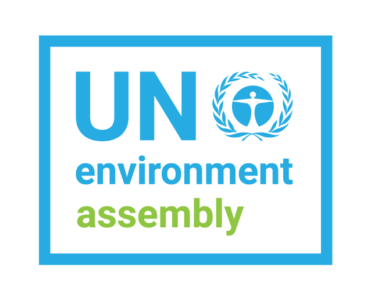Governing Geoengineering at the United Nations? No, at Least Not Now
A proposed resolution falters at the UN Environment Assembly

At this week’s UN Environment Assembly, countries’ representatives debated a draft resolution regarding climate geoengineering. Unable to come to agreement, it was withdrawn Wednesday. This is not surprising to me, as — for the most part — leaders presently lack political incentives to take action. I am also not particularly disappointed, because a counter-productive resolution seemed fairly likely.
As background: in the face of continued insufficient cuts to greenhouse gas emissions, scientists and others are considering large scale interventions in natural systems to prevent dangerous climate change. The proposed geoengineering methods vary but for the most part would either remove carbon dioxide from the atmosphere or make the planet a bit more reflective. Some geoengineering methods have the potential to greatly reduce climate change but also pose physical risks and social challenges. Dedicated governance will eventually be warranted, and given the global stakes, some governance should be international.
The Swiss government, with the support of ten diverse countries, introduced a draft resolution [PDF] to the UN Environment Assembly, the governing body of UN Environment (formerly UNEP). It was modest, substantively only creating an expert committee to assess the proposed methods and existing governance. Yet in the week leading up to the Assembly proper, concerns and divisions quickly became apparent in the lead-up Committee of Permanent Representatives [1, 2, 3, 4]. Countries’ representatives proposed various amendments, leading to a heavily bracketed text that touched upon contested issues and crept into other institutions’ purviews. Resistance became strongest from the United States and Saudi Arabia, purportedly because the draft recognized the severity of climate change and referred to the recent report of the Intergovernmental Panel on Climate Change (IPCC). Recognizing the stalemate, Switzerland withdrew its resolution.
Why did such a modest proposal fail? After all, few informed observers assert that neither carbon dioxide removal (CDR a.k.a. “negative emissions technologies”) nor solar geoengineering (a.k.a. “solar radiation management” or SRM) will be needed to stay within the Paris Agreements’s 2°C warming limit. And all agree that geoengineering eventually warrants some form of dedicated international governance. However, a better question is, why would countries — or more accurately, their representatives — expend their limited political capital to push through a resolution on a controversial topic?
The answer is that countries generally do not have sufficient incentives to do so. Those who resist action to prevent climate change — like the US and Saudi Arabia — are unlikely to advocate for geoengineering because doing so would implicitly acknowledge the serious risks of anthropogenic climate climate. Meanwhile, those who generally push for climate action must answer to constituents — often including “deep green” environmentalists — who tend to see geoengineering as a problematic distraction from emissions abatement. (For this reason, Switzerland, the other supporting countries, and others behind the resolution deserve praise for sticking their necks out on an important issue.) Furthermore, as issues, geoengineering and its governance have numerous aspects that seem counter-intuitive and contrary to current climate change and environmental politics. This produces steep learning curves, yet negotiators and other decision-makers have limited time. Cursory research quickly turns up multiple inaccurate, not precisely true, and genuinely false claims. What’s more, the only advocacy groups on the ground in Nairobi were those who oppose all geoengineering, and were actively spreading misleading, weakly supported assertions. Even if a decision-maker is convinced that some geoengineering methods could reduce climate change, she or he would presently gain nothing by pushing for their research and consideration. There are no active geoengineering research advocacy groups, and those environmental organizations that back it do so cautiously — and understandably so [1, 2 [PDF], 3]. Until these circumstances change, decision-makers will generally lack incentives to take action.
Ultimately, this week’s outcome is not bad. Given that geoengineering is complex and its discourse rife with inaccuracies, a productive outcome will require substantial time and effort. (Indeed, when the parties to the Convention on Biological Diversity hastily and prematurely considered the issue almost a decade ago, the result was a poorly worded and controversial decision.) Moreover, the original draft UNEA resolution had significant shortcomings. It jointly considered carbon dioxide removal and solar geoengineering, even though these two categories are more different than alike. Its preamble was one-sided, being “Deeply concerned about the potential global risks and adverse impacts of geoengineering on environment and sustainable development,” yet not recognizing some methods’ potentials to reduce climate change. International governance of geoengineering is important but not extremely time sensitive; better to wait a couple years to establish a knowledge base and shared understandings than to have an counterproductive resolution now.
There is also an argument that the UN Environment Assembly may not be the right lead institution, at least not now. Although UN Environment has been instrumental in catalyzing important international environmental governance in the past, the IPCC’s mandate includes reviewing “possible response strategies to delay, limit or mitigate the impact of adverse climate change.” It thus seems essential. In fact, Switzerland’s representative “anticipated further discussions beyond UNEA on this issue.” If the UN Environment Assembly were to take on geoengineering again in the future, the boundaries of its scope with those of the IPCC as well as of the UN Framework Convention on Climate Change institutions would need to be first clarified.
Regardless, geoengineering research and its governance will continue to move ahead, with our without action by the UN Environment Assembly or other international institutions. For example, a couple weeks ago, the US National Academies appointed its own committee to “develop a research agenda and recommend research governance approaches” for solar geoengineering, similar to what it has done for carbon dioxide removal. Likewise, on Monday, a team of researchers published important results from a high-resolution model that indicates that a moderate use of solar geoengineering might be able to reduce climate change for essentially the entire planet, with no regions becoming climatically worse off.
Update (7:30 AM 14 March Pacific Standard Time): The Economist reports on the draft resolution as part of a wider piece on geoengineering. There, unattributed author Catherine Brahic reports that
several delegates told this newspaper that America and Saudi Arabia opposed the Swiss proposal to review geoengineering, preferring the issue to be assessed by the Intergovernmental Panel on Climate Change (ipcc), which is due to include something about the technologies in its next big report, expected in 2021.
The distinction may seem procedural, but the Swiss proposal was for a more comprehensive appraisal and one that would be delivered more quickly, by August 2020. What is more, the ipcc’s mandate is primarily to consider the science of geoengineering, not whether and how to regulate its various technologies…
The Americans, some said, did not appear to want to make room for conversations, let alone make decisions, about a framework for geoengineering that could restrict their future options.
This could result in more attention to geoengineering in the next major IPCC report.
Janos Pasztor of the Carnegie Climate Geoengineering Governance Initiative, on Twitter:
While regretting governments were unable to reach consensus at #UNEA4 on the #geoengineering resolution, we @C2G2net are pleased to see that governments seriously negotiated and engaged on this critical issue. #Governance of #carbonremoval & #solargeonegineering r moving forward
Also on Twitter are short reports from three scholars who were in Nairobi. Matthias Honegger:
Lumping together CDR and SRM and developing a tendency toward a framing of preventing on the one end versus the opposition of restraining language all-across ‘geoengineering’ on the other end were not reconcilable. [Jesse Reynolds] gets close but misses some additional nuanced observations that I will try to write up soon-ish… This negotiation in some respects was turned into a placeholder upstream governance discussion.
Decisive issues: scope (scientific only or also governance), venue (IPCC or UNEA), weight put on precautionary principle, categorisation & grouping of technologies (esp CDR/SRM), and strength of wording about geoengineering being no substitute for mitigation.
Also a clash of epistemologies. What is relevant knowledge for deciding on development and governance?…
there were plenty of strong incentives on display this week – conflicting ones that will concern anybody interested in broader knowledge based assessment leading to meaningful governance.
Reader Comments
4 Replies to “Governing Geoengineering at the United Nations? No, at Least Not Now”
Comments are closed.







Mankind has been geoengineering the planet by emitting CO2 into the atmosphere. How did that work out?
Now, proponents of “solar geoengineering” are considering direct emission of SO2 into the stratosphere to produce reflective aerosols. How will that work out?
Sodium dioxide (SO2) is a greenhouse gas emission produced when sulfur is burned, as in combustion of coal and other fossil fuels. It reacts with sunlight and water to produce acid rain and sulfates (which cause respiratory and dietary harm). It also has negative climactic consequences, such as perturbing the ozone layer, decreasing precipitation and reducing oxygen from photosynthesis. While it also has a reflective property, mankind should consider less SO2 in the atmosphere, not more.
Alternative, theoretical reflective aerosols are being used in some climate models, and a harmless alternative may be identified or produced in the future, but none seem to exist at the present time.
So, “no, at least not now.”
Typo. Sulfur dioxide. Also, reduced photosynthesis reduces carbon sequestration by plants.
Sorry.
Thank you for this most informative, balanced, and accurate analysis of this complicated issue. A real breath of fresh air !
Thank you for the kind words!